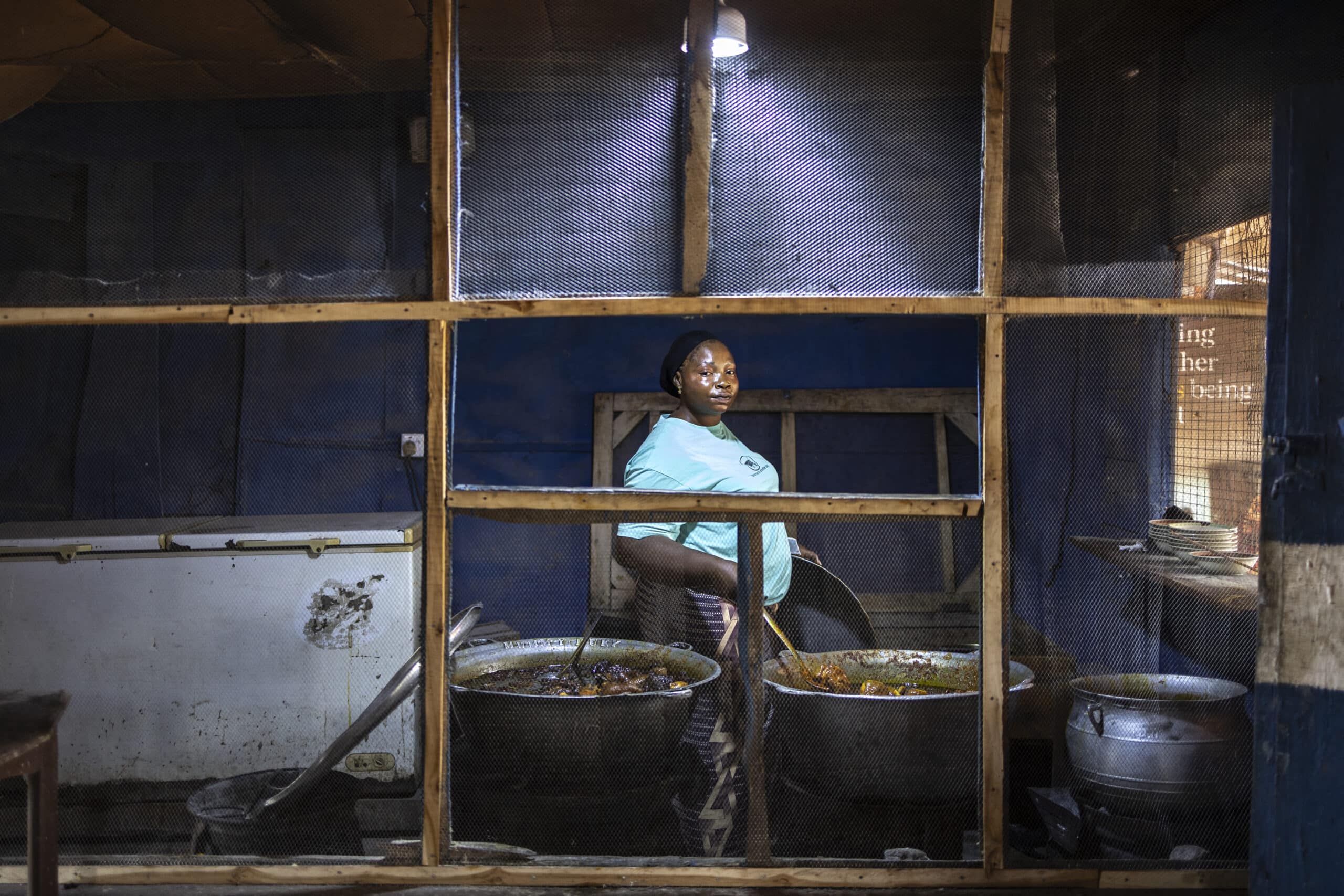
A woman poses for a photograph as she cooks in Iseyin, Oyo state, Nigeria, on November 1, 2024. – More than 33 million Nigerians face hunger next year, the number rising sharply as soaring food prices exacerbate the effects of conflict and climate change, according to a report Friday, November 8, 2024. (Photo by OLYMPIA DE MAISMONT / Agence France-Presse)
ABUJA, Nigeria — More than 33 million Nigerians face hunger next year, the number rising sharply as soaring food prices exacerbate the effects of conflict and climate change, according to a report Friday.
The “Cadre Harmonise” report – compiled by Nigerian officials, UN agencies, and major aid NGOs – reports twice a year on the nutrition situation in 26 crisis-hit states in the north and center of Nigeria.
According to the latest figures 25.1 million Nigerians are already experiencing “acute food insecurity” even at the peak of this year’s harvest season, following floods and dramatic price rises.
This figure could leap to 33.1 million next year as the Nigerian naira, collapsing in value, sends food import prices soaring and an end to fuel subsidies makes delivery and distribution costly.
READ: SWS: Hunger rate rises to 22.9 percent in third quarter
“Approximately 5.4 million children and nearly 800,000 pregnant and breastfeeding women are at risk of acute malnutrition or wasting from six of the most affected states,” said a statement from the World Food Programme.
“Of these, an alarming 1.8 million children could face Severe Acute Malnutrition (SAM) and require critical nutrition treatment.”
Northeastern Nigeria has been plagued by Islamist insurgencies since 2009, banditry and kidnap gangs operate across the north of the country, while climate change and deforestation have made the region more arid.
The violence and desertification have also spurred sometimes violent rivalries between farming communities and nomadic herdsmen.
Bean and rice prices soar
While these long-term challenges persist, however, the state of the Nigerian economy has played a role in driving up food prices.
The report cites the continuous devaluation of the Nigerian currency against the dollar and last year’s decision by President Bola Tinubu to abolish a decades-old fuel subsidy.
One year later, in June, annual food-price inflation was recorded at 40.9 percent.
According to the National Bureau of Statistics, the price of beans rose 282 percent between October 2023 and the month in 2024. Locally grown rice was up 153 percent.
READ: Learning from innovative Zero Hunger programs in Spain, Belarus, Niger
Then, last month, torrential rains and severe flooding swamped a swathe of central Nigeria, including 1.6 million hectares of farmland, according to an estimate by the UN Food and Agriculture Organization.
“The potential annual production losses for maize, sorghum, and rice combined in the flooded areas, could be about 1.1 million tonnes. This could feed 13 million people for a year,” the statement said.
Tinubu’s government has responded to food shortages and price inflation by temporarily suspending import duties on certain imports.
The United Nations has urged international donors and the Nigerian government to do more to head off the crisis, and a more detailed breakdown of the report with specific recommendations is due.